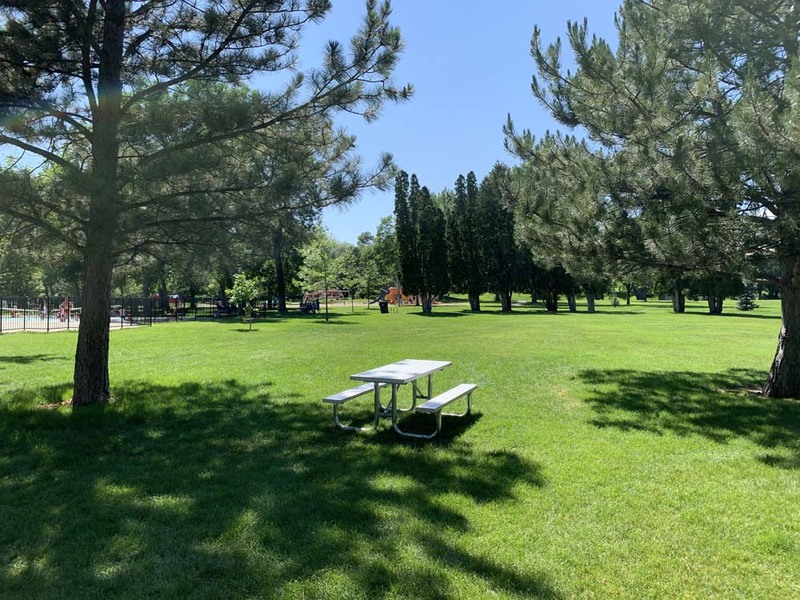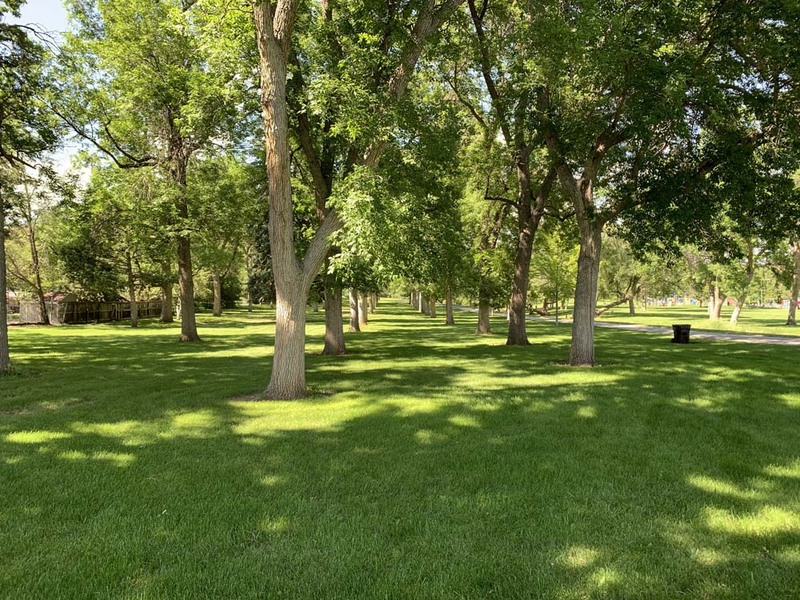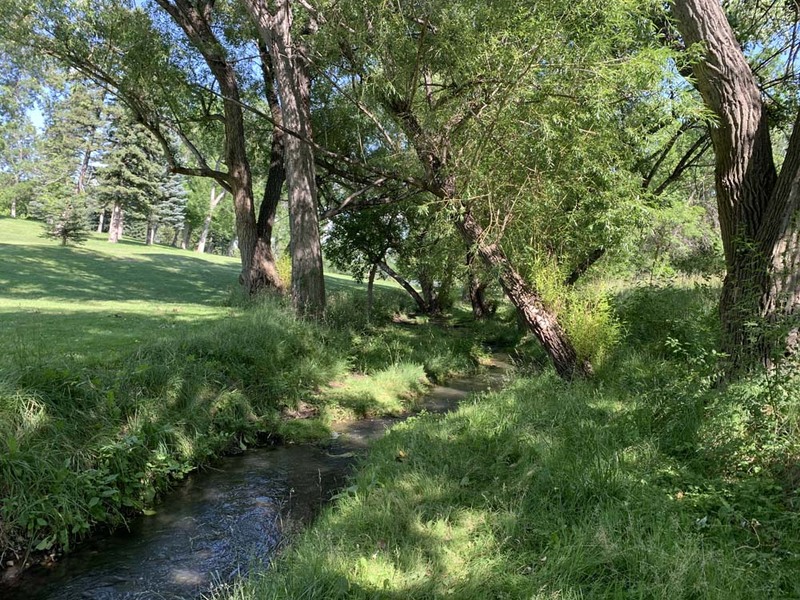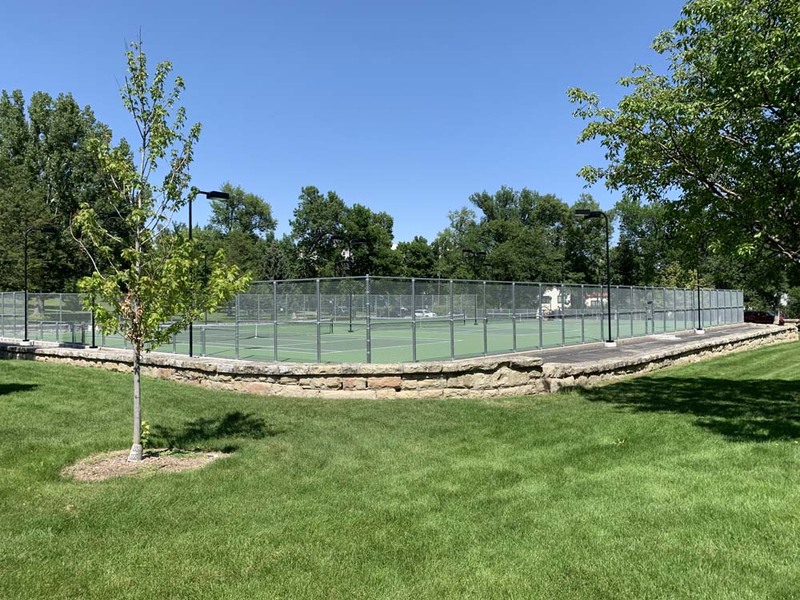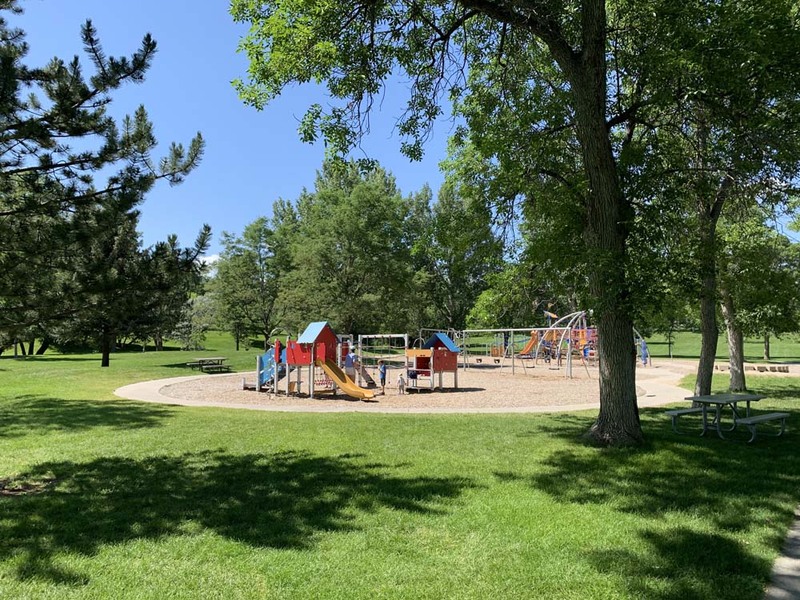Pioneer Park
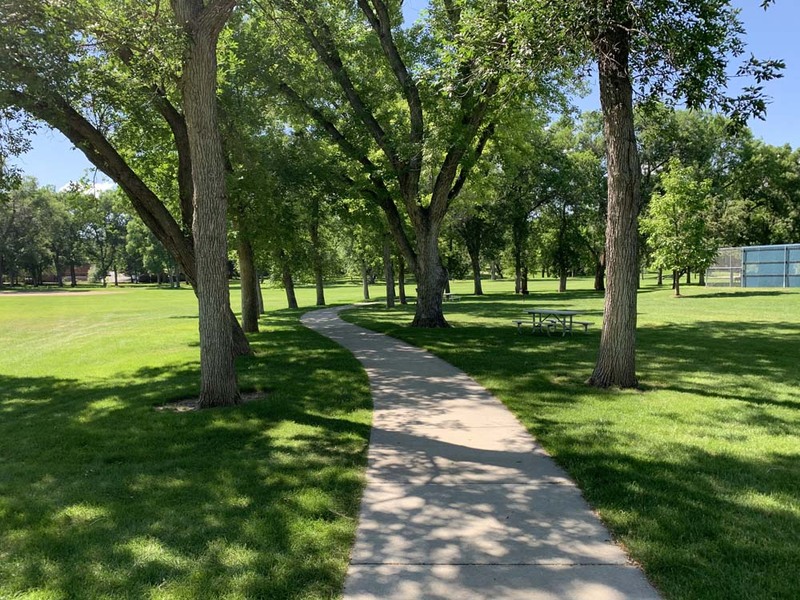
In 1920, the City of Billings purchased 32.5 acres of rural, largely treeless land, anticipating correctly that a neighborhood would grow around it. They began clearing sagebrush and planting trees, and a year later, the parks board contracted with twenty-five-year-old Dorothy Gray to create a master plan for the park, which in 1922 was named to honor Montana pioneers. A Billings native, Gray had graduated from Cornell University with a specialization in landscape architecture. She was a vocal advocate for public commons and believed that parks could nurture civic pride and foster morality by providing wholesome recreational opportunities. Her plan for Pioneer Park included natural, open spaces for picnicking; winding walkways through wooded areas; playgrounds; an open-air amphitheater; tennis courts; a sand pit; a wading pool, upgraded in 1993; and athletic fields. It also called for damming Crooked Creek to create a lake, a replica pioneer log cabin for use as a museum and meeting place, and a swimming pool. While lack of funding doomed the most ambitious parts of her plan, much of the park’s design reflects Gray’s original vision. In 1932—to celebrate Billings’ “semicentennial”—the city unveiled a commemorative plaque recognizing area pioneers (a second memorial was added in 2003). Pioneer Park saw additional improvements in 1936, courtesy of the Works Progress Administration, a Great Depression-era program created to put unemployed people to work. A firehall, built in 1948, became home to the parks department in 1960 and, later, a recreation and event space, filling a need first identified by Dorothy Gray in 1921.
Images

